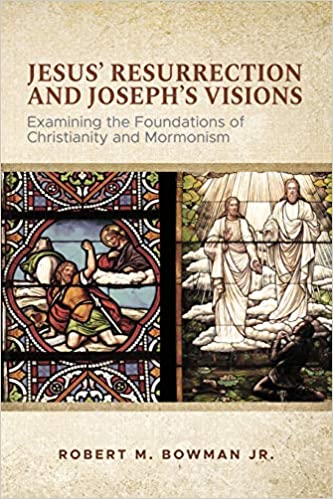
Some Mormons believe that yesterday—March 26, 2020—marked the 200-year anniversary of the First Vision, in which Joseph Smith saw the Father and the Son in the woods near his home. If the First Vision had taken place in the spring of 1820, March 26 was a possible day for the event. However, there are many reasons to question whether the First Vision happened at all, including some evidence against any date in 1820. In particular, Joseph’s account of the First Vision in Joseph Smith–History correlates the vision with “an unusual excitement on the subject of religion” (JS-H 1:5), that is, an unusual revival, that he says led to his going into the woods to pray on that early spring day in 1820. Joseph’s description of the revival contains a number of specific elements that allow us to identify the revival as one that took place in 1824-25, not in 1820. The case for an 1824 date of the revival is much, much stronger than I had realized before I began researching the matter for my book. Indeed, I had originally considered not even giving the matter any serious weight. The evidence changed my mind.
The evidence comes first of all in the form of very specific details from Joseph’s own account, as well as from Joseph’s associate Oliver Cowdery, Joseph’s mother Lucy Mack Smith, and (many years later) Joseph’s brother William Smith. All of these LDS sources provide details that cohere with the detailed account of the 1824-25 revival by George Lane, the Methodist minister that was one of the main leaders of that revival—and the minister mentioned by both Oliver and William as having been involved. This documentary evidence confirms the finding more than half a century ago by Wesley Walters that church membership statistics showed that 1824-25 was almost certainly the period of the “unusual excitement.”
In Jesus’ Resurrection and Joseph’s Visions: Examining the Foundations of Christianity and Mormonism, I devote ten pages to the issue of the revival (pp. 234–44). In this section of the book I present the following material:
- An analysis of the chronology in Joseph Smith–History and why the date of the revival matters
- A review of the seminal 1967 article by Wesley Walters and the efforts of a large team of some forty Mormon scholars that were recruited to mount a response
- A list of 12 points of agreement regarding the revival between Joseph Smith–History and Oliver Cowdery’s 1834–35 account in the Latter Day Saints’ Messenger & Advocate
- A rebuttal to the claim of some LDS apologists that Oliver’s account, which identifies George Lane as a leader of the revival, is untrustworthy
- A list of 6 points of agreement between Lane’s account of the 1824-25 revival and the accounts by Joseph and Oliver
- Evidence that both William Smith and Lucy Mack Smith dated the revival shortly after the death of her son Alvin (which would mean it took place in 1824), and documentation of the LDS Church’s efforts to suppress this information from Lucy’s memoirs
- An explanation of why LDS efforts to identify a revivalist setting for the First Vision in 1818-20 instead of 1824 do not work
If the revival that Joseph claimed had led to his prayer and the First Vision took place in 1824 rather than in 1820, this would mean that Joseph’s account of the setting and context of the First Vision is erroneous. It would be a serious problem for Joseph’s whole account, since he claimed that the angel Moroni appeared to him in 1823 three years after the First Vision—but a year before the revival that supposedly led to the First Vision. This is not the only problem with the First Vision story, but it is a very serious problem indeed. It certainly makes moot the claim that we can date the First Vision to March 26, 1820.